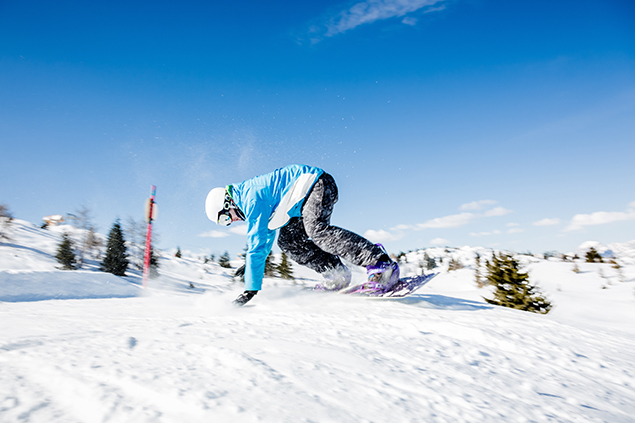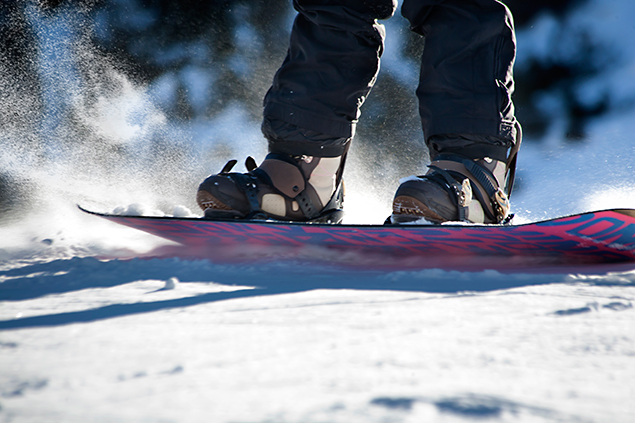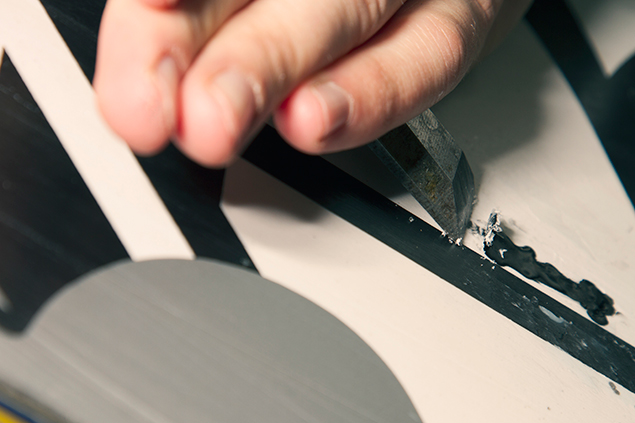The summer may not be suitable for snowboarding, but you shouldn’t completely forget about your shred stick until winter returns. In fact, the offseason provides a great opportunity to make sure your board is in tip-top shape and ready to roll when it’s time to hit the slopes again. This means taking the appropriate maintenance and storage measures while the board is not being used.
The Importance of Snowboard Maintenance
Knowing how to tune, wax and store a snowboard properly can be the difference between a smooth ride all season and expensive repair or replacement when it’s time for that first trip. If you follow the right practices for maintaining and storing your snowboard, you can extend its life considerably.
Heat and humidity in the summer can contribute to boards rotting or rusting, which can decrease performance when you jump back on the snow in winter. When your board isn’t tuned or waxed regularly, it may be harder to control on the slopes – potentially putting your safety at risk.
Can You Tune and Maintain a Snowboard Yourself?

Maintaining your board is critical to getting the best ride. For many, that means having the board professionally serviced at the end of every season. Some snowboarding enthusiasts, however, aren’t comfortable with sending their beloved boards away to a shop and just trusting proper care is being taken. If this is the case for you, DIY maintenance is always an option.
Performing your own regular snowboard maintenance is generally less expensive over time than taking it to a pro, and if you have the right tools, you can achieve optimal performance throughout the season. While this sounds great, the advantage to taking your snowboard to a shop is that it would have the equipment and machinery necessary to make your board look like new each year. You wouldn’t have to spend time learning the craft and instead could focus on where your next ride will be.
Whether you take it in or try it yourself, it’s important to keep your edges sharp and base waxed. If you are ready to learn how this offseason, keep the following tips in mind.
Tuning a Snowboard
Tuning your snowboard helps you maintain greater control on the trails. Depending on the snow conditions and how often you ride, your board can be tuned anywhere from weekly to just once at end of each season. Tuning usually involves three steps:
- Edge Work
- Base Repair
- Waxing
Edging Your Snowboard

When rust and small burrs form on the edges of your board, it’s important to file and sharpen those areas. To do this, you will need an edge file, snowboard vise, gummy stone, diamond stone and file guide, along with clean towels. Once you have your supplies, you can begin tuning:
- Put the board into the vise to hold it securely in place.
- Wipe the snowboard down with a clean towel to remove dust and dirt.
- File the burrs and jagged sides using the edge file or diamond stone. Using a diamond stone removes less material than a file, so is often the better choice if doing regular sharpening and polishing after the initial angles are set. If there is a lot of damage or the board loses its sharp corner, slowly and carefully run the file from tip to tail to smooth out nicks, using the file guide to help you get the right angle. With a diamond stone, follow the same motion, but wet the stone before sliding it.
- Once the edges are de-burred, use the gummy stone to remove any leftover rust and polish the board, without taking too much off the frame.
Snowboard Base Repair

Riding can cause nicks on the edges of the board, but the base is also vulnerable to damage. Hitting rocks or sticks peeking out of the snow can cause scrapes and gouges. If you have several dings in the bottom of your board, you will not glide as smoothly. To repair damage to your base, follow these steps:
- Place your board on your vice and use a scraper to remove stuck-on dirt or old wax buildup. Then use a wire brush to remove debris.
- Wipe on base cleaner to remove wax around the damaged area, followed by rubbing alcohol to wipe off excess cleaner.
- Light a P-Tex candle until it begins to drip, then carefully fill the scratches with the liquid plastic, taking care not to touch the board with the candle.
- Once the holes have been filled and base has cooled, use the scraper to smooth over the base and remove extra P-Tex.
How to Wax a Snowboard
When your edges are sharp and the base is smoothed out, it’s important to apply wax, especially when prepping for storage. Waxing should be done about every fifth boarding trip, but at the very least, at the end of each season:
- Begin by wiping base cleaner over the entire bottom to remove old wax and dirt.
- Once the board dries, warm the wax with a waxing iron until it starts to melt. Slowly drip the wax evenly across the entire base of the board and iron the drops smoothly back and forth to build a nice layer.
- After the wax has cooled, slide a scraper from tip to end using short, steady motions until any excess is removed. If doing prep for the end of the season, Gear Patrol recommends using a soft, all-temp wax and leaving a thick coat on the base while in storage.
- To really make your board shine, give it one final buff with a brush and then wipe down with a towel to clean off debris.
How to Store a Snowboard

Now that your shred stick is repaired and protected, make sure you properly store it. Keep your board in a cool, dry place to prevent the base from drying out and edges from rusting. Place the snowboard in a bag or wrap in plastic to keep dirt and dust from building up on its surface. To make sure the boots store well, clean the liners and wipe out the shell before putting away. Make sure the liners are dry before storing to prevent mold from forming.
Tuning and waxing a snowboard regularly is important for performance and safety on the slopes. At the very least, your board needs to be prepped and stored correctly during the offseason so you don’t miss a beat when returning to the mountain. When it is time to get back to shredding, make sure your board travels safely to avoid counteracting all of the work you put in to it this summer. Safely ship your snowboard to wherever you are staying and jump right on the slopes!
Sources:
https://whitelines.com/uncategorized/31455.html
http://www.tactics.com/info/tuning-your-snowboard
http://www.evo.com/how-to-tune-skis-and-snowboards.aspx
http://www.racewax.com/t-tuning-tips-overview.aspx
http://www.nonstopsnow.com/blog/2010/03/wax-and-tune-your-snowboard-at-home/
https://www.rei.com/learn/expert-advice/tune-snowboards.html
http://www.tordrillomountainlodge.com/ski-snowboard-storage-tips/
https://www.snowlink.com/snow-sports/snowboard/intro-to-snowboarding/storing-your-snowboard/
http://gearpatrol.com/2016/03/11/prep-skis-snowboards-summer-storage/
http://snowboarding.transworld.net/photos/how-to-wax-your-snowboard/#I2G9sGwLJcjwh1zA.97
